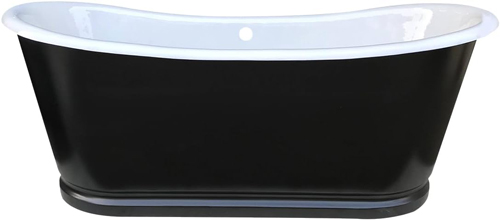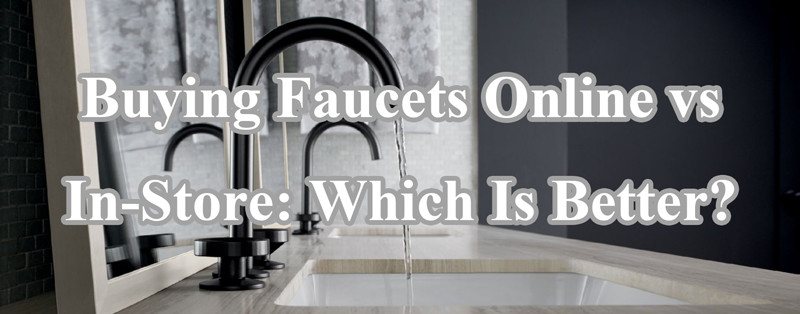
Cast iron tubs have been a staple in bathroom design for over a century, known for their durability, classic look, and excellent heat retention. However, like any material, cast iron tubs come with their own set of advantages and disadvantages. In this post, we’ll delve into the pros and cons of cast iron tubs to help you decide if one is right for your home.
Pros of Cast Iron Tubs
- Durability and Longevity Cast iron tubs are renowned for their strength and longevity. Made by pouring molten iron into a mold and then covering it with a thick layer of enamel, these tubs can last for decades, if not generations. They resist chipping, scratching, and denting much better than acrylic or fiberglass alternatives.
- Superior Heat Retention One of the standout features of cast iron tubs is their ability to retain heat. Once heated, the thick iron walls keep the bathwater warm for a longer period compared to other materials. This makes for a more luxurious and relaxing bathing experience, especially in colder climates.
- Timeless Aesthetic Appeal Cast iron tubs often feature classic designs, such as the clawfoot or slipper styles, which can add a touch of elegance and vintage charm to any bathroom. Their heavy, solid appearance also exudes a sense of permanence and quality.
- Versatility in Finishes While the traditional white enamel is common, cast iron tubs are available in a variety of colors and finishes. This allows homeowners to choose a tub that perfectly complements their bathroom decor. The enamel coating also provides a glossy, easy-to-clean surface.
- Eco-Friendly Option Cast iron is a recyclable material, making these tubs an environmentally friendly choice. Many older cast iron tubs are refurbished and resold, reducing waste and promoting sustainability.
Cons of Cast Iron Tubs
- Weight One of the most significant drawbacks of cast iron tubs is their weight. A standard cast iron tub can weigh between 300 to 500 pounds, making them challenging to install. This substantial weight may require additional floor reinforcement, especially in older homes or on upper floors, adding to the installation cost and complexity.
- Cost While they offer long-term value due to their durability, cast iron tubs are more expensive upfront compared to tubs made from acrylic or fiberglass. The price reflects the quality of the material and the manufacturing process, but it can be a significant investment for homeowners.
- Maintenance of Enamel Coating Although the enamel coating is durable, it can still chip or scratch over time. Repairing enamel is possible, but it can be costly and may not perfectly match the original finish. Maintaining the pristine look of a cast iron tub requires careful handling and regular cleaning with non-abrasive products.
- Cold Surface Before filling with hot water, cast iron tubs can feel cold to the touch, especially in cooler climates or unheated bathrooms. This initial coldness can be off-putting, though it quickly dissipates once the tub is filled with warm water.
- Limited Design Options While the classic designs are timeless, they may not suit modern or contemporary bathroom styles. The heavy, traditional look of a cast iron tub might clash with sleek, minimalist aesthetics. Homeowners seeking ultra-modern designs might find the options limited with cast iron.
Making the Decision
When deciding whether a cast iron tub is right for you, it’s essential to weigh these pros and cons against your personal preferences, bathroom design, and budget.
Consider Your Home’s Structure The weight of a cast iron tub necessitates careful consideration of your home’s structural capabilities. Ensure your bathroom floor can support the heavy load without extensive modifications. Consulting with a contractor or structural engineer might be necessary to determine feasibility and any additional costs for reinforcement.
Evaluate Your Budget While cast iron tubs are a long-term investment, the initial cost can be high. Evaluate your budget and consider if the benefits of durability and heat retention justify the expense. Remember to factor in potential installation costs, including delivery, labor, and any necessary floor reinforcement.
Think About Your Aesthetic Preferences If you appreciate classic, vintage, or traditional styles, a cast iron tub can be a stunning focal point in your bathroom. However, if your taste leans toward contemporary or modern design, you might find the styles available in cast iron to be limiting. Consider how the tub will integrate with your overall bathroom decor.
Weigh the Maintenance Requirements Maintaining a cast iron tub requires some care to prevent damage to the enamel coating. If you’re willing to commit to gentle cleaning and mindful use, the longevity and beauty of the tub can be well worth the effort. However, if you prefer low-maintenance options, other materials might be more suitable.
Assess Heat Retention Importance If you enjoy long, warm baths, the superior heat retention of a cast iron tub can significantly enhance your bathing experience. The ability to maintain water temperature for extended periods is a notable advantage that can add to your comfort and relaxation.
Conclusion of Pros and Cons of Cast Iron Tubs
Cast iron tubs offer a unique blend of durability, heat retention, and timeless beauty, making them a coveted choice for many homeowners. However, their weight, cost, and maintenance requirements can be significant considerations. By carefully evaluating these factors and considering your personal preferences and home’s needs, you can make an informed decision about whether a cast iron tub is the right fit for your bathroom.
 WOWOW Faucets
WOWOW Faucets






您好!Please sign in